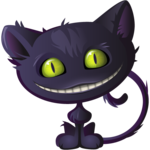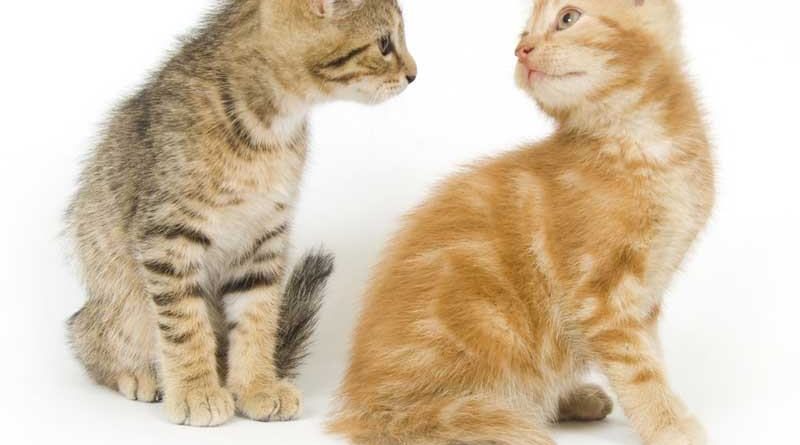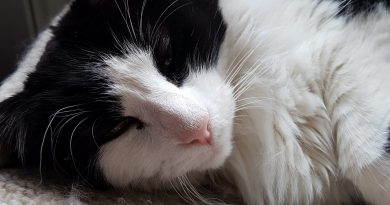What Is Your Cat Saying To You?
Cats use many ways other than the their Meow. They use their eyes, tails and ears to communicate with us and each other. Do you know what they are saying? Here are some things to look for.
Tail Signals
Cat to cat language is largely made from body language and signals. This form of communication is in essence the main source of cat to cat expression, of course cats will meow, hiss and spit at each other. But when you actually observe your cat most of the time they are silent, but even so they are communicating through ear, tail and body posture and postion. The tail is an important part of the cat to watch and de-code to understand your cat.
Contented
Tail curves down and then up a the tip – this means that the cat is peaceful and contented.
Tail slightly raised and gently curved – the cat is curious and interested.
Tail held vertical but with tip tilting over – the cat is interested and friendly and in a greeting mood but is also slightly cautious.
Tail held vertical with the tip stiffly held upright – the cat is very happy which is ready and willing to greet, with no reservations.
Tail held vertically and quivering – this often happens after the cat greets you and means a friendly hello.
Unhappy
Tail lowered, maybe even between legs – this is a signal of submission. Your cat may be feeling lowly and defeated
Tail held low and puffed out – the cat is fearful
Tail arched and bristling – the cat is in a defensive mode, but also a cat ready to defend itself if pushed. A cat will always puff itself up when challenged to try and make itself appear bigger and scare the challenger
Aggressive
Tail held straight and bristling – this is the sign of aggression
Tail swishing violently side to side – the sign of conflict in its most angry state, usually a sign that the cat is about to attack.
Tail still with tip twitching – the cat is mildly irritated. If the tip starts to twitch more vigorously then the cat is becooming more bad tempered.
Sexual
Tail held to one side – this is usually performed by the female. This is an invitation to the male when she is ready to be mounted.
Ear Signals
Unlike humans ears play a large part in cats communication.They have between 20 and thirty muscles that controls their movement – they can swivels through 180 degrees and move independently of each other. There are five basic ear signals – relaxed, alert, agitated, defensive, and aggressive.
Happy relaxed cat
The cat will usually sit with its ears facing forward and tilted slightly back, as it listens for interesting sounds. When an interesting sound is detected the ears change into alert mode.
The alert cat
The ears will become more pricked as the muscles in the forehead pull them in. If the ears begin to twitch or swivel, the cat is probably feeling a little anxious or unsure of the noise or situation.
An aggitated cat
If the cat is feling in a state of conflict, frustration or apprehension or apprehension, the cat will often display a nervous twitching of the ears.
A defensive cat
A defensive cat will display its ears fully flattened. This is also a practical defense mechanism so that if the cat gets into a fight its ears won’t be damaged.
An aggressive cat
The ears are rotated but not fully flattened, with backs visible from the front. This is the most dangerous ear signal a cat can transmit.
Eye Signals
Fear or excitement
If a cat feels threatened and also if it sees something pleasing the cat’s pupils will become dilated.
Annoyed
An annoyed cat will turn its ears back, while its pupils constrict and its whiskers bristle forward.
Playing and hunting
The ears are pricked, pupils dilated and whiskers thrust forward.
Relaxed or friendly
A relaxed cat will have perked ears and whiskers. Dilation of the pupils depends on the light.
Purring
Purring in cats first occurs at about one week of age. It serves as a signal to the nursing mother cat that all is well with her babies and that the milk supply is reaching its destination. She, in turn, purrs, letting the kittens know that she too is in a relaxed and co-operative mood. It is believed that purring among adult cats and between adult cats and humans is derived from this primal parent-offspring context. Contentment is not the sole condition for purring, however. A more precise explanation is that purring signals a friendly social mood and can be employed by an injured cat to indicate the need for friendship and help. It has been observed that cats in great pain often purr loud and long and can hardly be considered to be contented.
Unlike our small domestic cats that purr with both inward and outward breaths (with their mouths firmly shut), their large cousins–the lions and tigers, can only sputter out a friendly “one-way purr” when greeting friends. However, the big cats have a feature that compensates for their inability to purr–they can roar! (Something our miniature house-bound tigers would undoubtedly love to do.)


